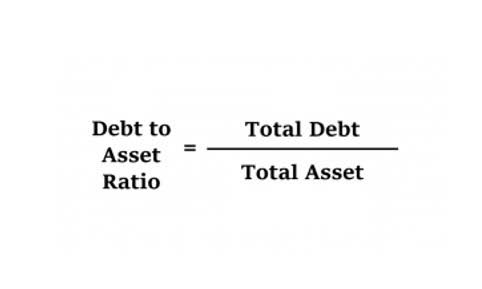News & Notice
공지사항
| 제목 | What are indirect manufacturing costs? | ||
| 작성일 | 2022-02-25 | 작성자 | 원어민강사 |

Following these steps provides an accurate view of total costs to manufacture goods or deliver services. If you want to reduce indirect expenses like utilities, cut your bills down by conserving energy. You can power down equipment when you aren’t using it, purchase energy-conserving equipment, or switch utility providers. Let’s imagine that, rather than working for the water supply company, you are in a management position for a stationery and greeting card store. For the stationary store, the purchase of bottled water is not tied to any specific sales or products offered at the store.
Direct cost Vs. Indirect Cost – What are the Key Difference?
- For example, if a university research lab receives a grant to study cancer treatments, the grant money would directly cover research staff salaries, lab equipment, and materials used in the research.
- Indirect costs refer to expenses that are difficult to directly assign to a specific project or product.
- Understanding how to categorize these expenses properly is key for accurate budgeting.
- A notable exception is direct labor costs, which usually remain constant throughout the year.
- They comprise a broad category of costs that, while not directly linked to the primary product or service, are necessary for the operation of the organization.
For example, retailers spend money buying products wholesale and manufacturers spend money on raw materials and labor. A charitable organization may have a salaried employee who works in three areas of the organization. This employee’s salary is a common indirect costs are also referred to as costs. cost that will be allocated to the three areas. Other factors that contribute to the emergence and spread of drug-resistant infections include a lack of clean water, sanitation and hygiene (WASH) and inadequate infection prevention and control.
Related AccountingTools Courses
Maintaining detailed records of direct and indirect expenses makes it easier to input accurate figures into the formulas to estimate future indirect costs for proposals and budgets. In addition, indirect costs present a challenge in how they are measured and require decision-makers to effectively manage and control them. If they are not properly addressed, they can lead to misunderstandings in the cost structure of an organization. One of the methods to address indirect costs is the predetermined overhead rate (PDOR), which looks at estimating the cost of an indirect cost based on an activity it involves. To more fully understand indirect costs, it is important to break them down further into either indirect product or period costs. Indirect product costs are attached to the product and included in the cost of goods sold, and indirect period costs are not attached to the product and are recorded as expenses.

Personnel Expenses and Indirect Costs
Indirect costs in business are costs that cannot be tied directly to a product or service. They comprise a broad category of costs that, while not directly linked to the primary product or service, are necessary for the operation of the organization. Administration costs include general administrative expenses that are not specific to the project but serve the entire organization.
Top 20 Examples: What Are Examples of Direct and Indirect Costs?
Common examples include utilities, administrative salaries, and building maintenance. Indirect costs are costs that are not directly accountable to a cost object (such as a particular project, facility, function or product). Some indirect costs may be overhead, but other overhead costs can be directly attributed to a project and are direct costs.
- Absorption is the method in which all project costs, both direct (like materials and labor) and indirect (like office rent or project management fees), are allocated to specific construction tasks or phases.
- Fixed indirect costs include expenses such as rent; variable indirect costs include fluctuating expenses such as electricity and gas.
- In cases in which an organization has only negotiated a research rate (see below for an explanation of rate types), the organization may apply the de minimis rate.
- These promote the spread of microbes that are resistant to treatment in health facilities and communities.
- Costs that arise due to unique project conditions or requirements and can include everything from site security to specialized utility setups.
- From federal interstates to the streets of a small town, roads are massive and high-stakes infrastructure investments.
Labor Example: Is Labor Direct or Indirect Cost?

However, these are expenses that are important to the operation of your business. Provides the separate rates for allocating employee benefits (e.g., payroll taxes, vacation, sick, retirement, health care, bonus, deferred compensation, insurance). From federal interstates to the streets of a small town, roads are massive and high-stakes infrastructure investments. Governments, municipalities, and communities need roads to safely connect people, economic centers, and…
These costs encompass the day-to-day operations of running a construction business. They include salaries of non-project staff, including operations and marketing personnel, accounting services, https://www.bookstime.com/articles/incremental-cost and other administrative expenses. While G&A costs for a firm usually remain relatively steady, they can fluctuate depending on the size and organizational structure of the company.
- Direct labor would include the workers who use the wood, hardware, glue, lacquer, and other materials to build tables.
- Typically, an employee’s wages do not increase or decrease in direct relation to the number of products produced.
- If indirect costs were to be included in a short-term price derivation, the seller would be quoting an excessively high price, which might result in an order being lost.
- This allows them to set prices, evaluate profitability, and make sound strategic decisions based on a complete understanding of costs.
- Rather, the indirect cost is sometimes referred to as a common cost which is allocated to the cost objects in a logical manner.
- Your organization may also selectively apply the de minimis rate in cases in which it does not have an applicable rate.
Small Business Resources
Economic Profit (or Loss): Definition, Formula, and Example – Investopedia
Economic Profit (or Loss): Definition, Formula, and Example.
Posted: Thu, 11 Apr 2024 07:00:00 GMT [source]
Indirect cost rates are negotiated agreements between an organization and the federal government that determine the percentage of direct costs that can be claimed as indirect costs on federal grants and contracts. Rates are based on audited and documented expenses and can vary significantly between organizations. Monitoring indirect cost rates each year also helps reveal trends and opportunities to optimize operations. For example, if indirect rates increase over time, it may signal inefficiencies to address.
